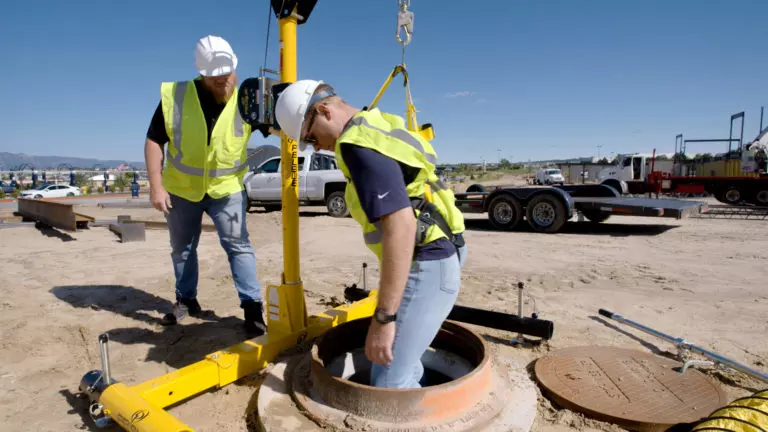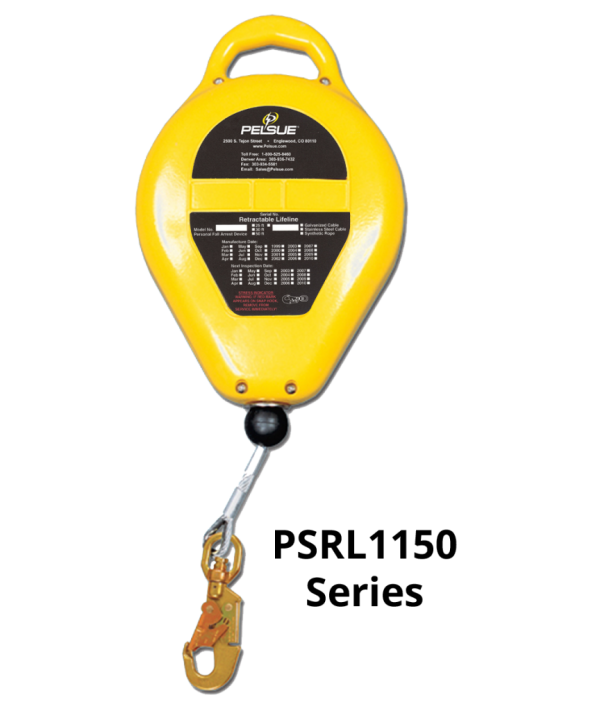Confined Space Rescue Plans: Non-Entry Rescues
June 27, 2021
When conducting a confined space rescue, choosing the fastest safe retrieval possible can make all the difference.
Whether a worker has sustained an injury, is being exposed to toxic gas, or suffers an acute medical issue like a heart attack, the sooner they can be recovered, the sooner they can get medical attention.
In this light, it’s easy to see the appeal of a non-entry rescue. Additionally, not sending a rescuer into a confined space prevents further accidents. The CDC states that injuries to would-be rescuers account for 60% of confined space deaths.
But a non-entry rescue is not always possible. Trickier still is determining whether a potential non-entry rescue is the safest option available. And what are some of the tools that help make non-entry rescues a success?
As an extension of our previous guide to creating your confined space rescue plan, we wanted to create a comprehensive reference specific to non-entry rescues.
If you can incorporate safe and sensible non-entry rescues into your training, you’ll go a long way to better protecting your workers. Let’s help you figure out how to do just that.
When is Non-Entry Rescue Allowed?
Since, as previously stated, entry rescues can be very dangerous, OSHA regulations state that non-entry rescues should be first choice whenever possible.
The regulation states that non-entry rescue is not required in two circumstances, namely when “the retrieval equipment would increase the overall risk of entry,” or “would not contribute to the rescue of the entrant.”
Let’s address the latter first. It boils down to the fact that non-entry rescue must stand a reasonable chance of success. If you know your equipment won’t reach the worker, entry rescue is required.
In the end, it’s just common sense. Don’t attempt a non-entry rescue that you’ve already determined won’t work. You will just end up wasting time that the worker in need of rescue may not have.
The other half of the regulation is a bit more complicated. It asks you to analyze the work area and the path of retrieval to see whether the use of equipment would reasonably create a hazard that wouldn’t be there otherwise.
For example, would the presence of the retrieval line in the space reasonably increase the risk that the extracted worker could become entangled? Or are there any obstructions between the worker and the exit that could impact the worker?
If so, non-entry rescue is off the table and a trained retrieval team must be used to attempt to save the worker.
When considering these potential hazards, remember the key differentiating factor of non-entry rescues: no one will be entering the confined space to resolve them.
Everything needed to rescue the worker must come from outside the confined space. The forces exerted by equipment, the problem-solving efforts of rescuers, and any eventual medical treatment all remain on the other side of the entrance from the fallen worker.
This means that any possible hindrance to rescue and retrieval must not be dismissed. Even if an obstacle seems easily overcome, remind yourself that no one will be in the confined space to help overcome it.
After all, if it was reasonable to ask the injured or stricken worker to handle their own rescue, you wouldn’t need this guide.
Some things that might obstruct a non-entry rescue are pipes, work equipment, or the very layout of the workspace. Pillars, corners, or drops (especially drops that are positioned laterally away from a vertical confined space exit).
The worker being retrieved may well be unconscious, and therefore limp. This affects how the worker moves when attached to the line.
All these factors need to be considered ahead of time. As outlined above, there are multiple questions that need to be asked about your rescue plan, and the answers are going to vary widely depending on the intricacies of your specific workplace.
The moment to answer these questions is before anyone sets foot in the space, not when someone needs rescue. Take the time to prepare now so you don’t waste critical time later.

Non-Entry Rescue Equipment
The equipment you need to conduct a non-entry rescue can also vary slightly by situation. The core gear, though, remains the same no matter what.
You need an anchor from which to conduct the rescue, a lifting device which moves the retrieval line, the line itself which secures the worker, and the harness that keeps the worker tethered.
Within that basic configuration, the specific nature of your equipment has an effect on the details of how you prepare for and conduct a rescue.
Just like you study and prepare your specific jobsites, you should know your fall prevention, protection, and recovery equipment inside and out. This means routine inspection of and training with your equipment.
The more you know about your equipment, the better prepared you are to adapt to circumstances as they exist on the ground. Adaptability is helpful in reducing the need for rescue while making them more successful when they are required.
One example of the often narrow differences in equipment is the functions encompassed by the Standard and 3-Way Self Retracting Lifelines (SRLs). Both perform great when it comes to arresting a fall, but only the 3-Way can raise or lower the worker to safety.


So if you only have standard SRLs in your inventory, you’ll need to pair them with a personnel hoist in order to retrieve a fallen worker as part of a non-entry rescue.
Take, as another example, a situation where a worker becomes unconscious while not attached to a hoist or 3-way SRL. Without a line connecting the worker to the anchorage, a non-entry rescue seems off the table, right?
Not quite. The Pelsue Rescue Pole, for example, allows a rescuer to attach a hoist line to the harness of a worker in a confined space, without needing to enter themselves.
https://www.youtube.com/watch?v=Klt_qBhqsRI When you know the capabilities and limitations of your equipment, you’ll know exactly which situations allow you and your crew to conduct a non-entry rescue.
Whenever possible, non-entry rescue is preferable to other forms of worker retrieval. Hazards exist in all confined spaces, and adding more entrants only increases the risk of more accidents and injuries.
Preparing yourself and your crews to execute non-entry rescues, both in terms of studying the space and understanding your equipment, means your non-entry rescues are more likely to be successful.
Getting workers home at the end of the day is worth every extra second of preparation and planning.

